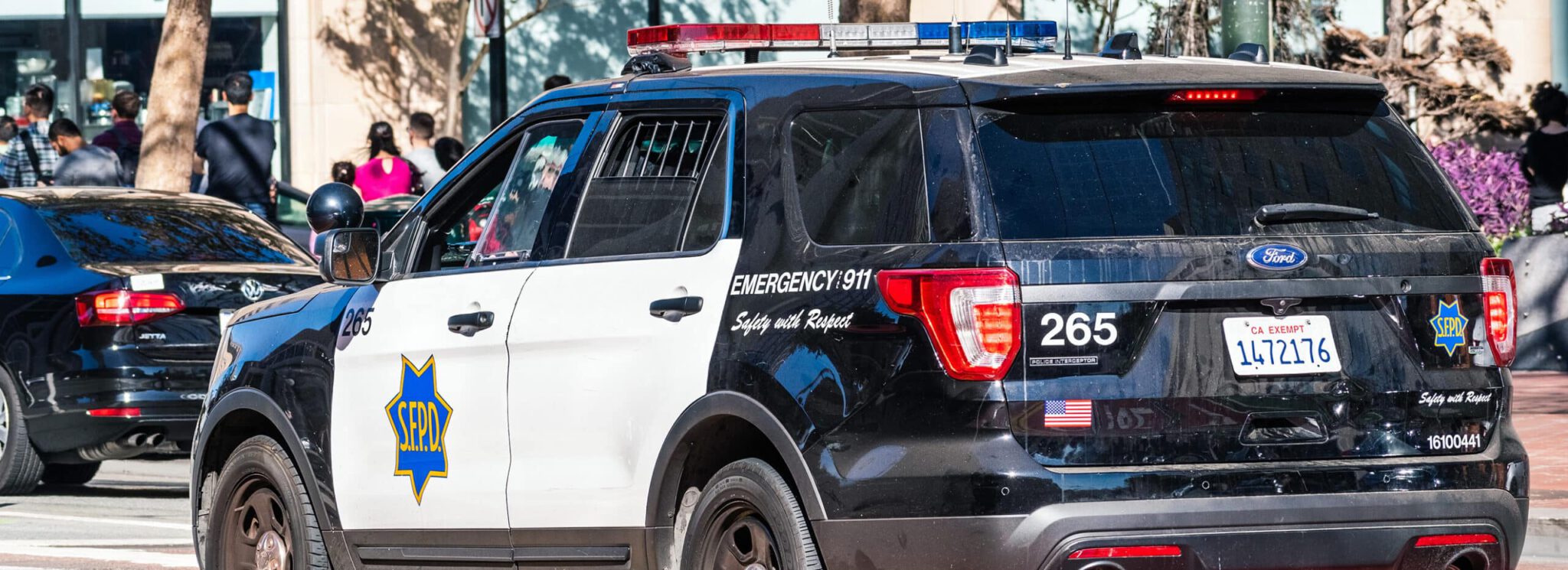San Francisco rates a two on the Neighborhood Scout Crime Analytics Crime Index. That’s on a scale of 100 where 100 is safest. This means San Francisco, California, is safer than 2 percent of U.S. cities. The California city takes the No. 1 spot in U.S. property crime according to FBI data.
A person’s chances of becoming a victim of property crime in San Francisco is 1 in 16. For the entire state of California, it’s 1 in 40.
Here’s what the FBI data says about San Francisco crime:
- Population: 889,282
- Property crime: 49,214
- Burglary: 5,322
- Larceny/theft: 39,675
- Motor vehicle theft: 4,217
The crime rate has led to stores like those in the Mission District to shut down. Owners say they’re closing stores because of increasing rents, crime and security, street conditions, and lack of help.
Part of the problem stems from Proposition 47, which downgrades possession of illegal drugs for personal use and theft of anything valued under $950 from felonies to misdemeanors.
With theft and drugs flourishing on the streets of San Francisco, these crimes classified as misdemeanors mean maybe little to no jail time. So, these criminals quickly return to the streets doing the same thing. Rinse, lather, repeat.
Fortunately, the tide is slowly changing.
Fighting San Francisco Crime
“San Francisco’s Quality-of-Life Toll” reports citizens are stepping up to do something about the crime in San Francisco. In response to the crime data reports, concerned citizens decided to start Stop Crime SF to proactively reduce and prevent crime
while holding officials accountable.
The group has a court-watch program in which they attend hearings and observe decisions related to their neighborhoods. They scrutinize the judges’ decisions, collect data, and advocate for victims. They also attend and speak at public hearings to ensure the city hears their concerns.
One police district reports robberies, burglaries, and auto break-ins are down. They’re working to lock up more criminals and keep low-level criminals from being released too fast.
Businesses must protect themselves. They cannot rely on others when the high crime rate spreads everyone thin. To fight the growing crime problem and to protect their workers, some businesses are spending a pretty penny hiring off-duty San Francisco cops through the 10-B program.
One problem. It’s a very expensive option. A business pays the officer overtime plus a 14.7 percent administrative fee to the city. All told, it can cost a business $100 an hour and $1,000 per day with the administrative fees. A sergeant costs $133 per hour to work in the daytime and $138 for nighttime. A lieutenant jumps to $153 and $158 per hour.
It’s better than hiring a security guard. Guards don’t get anywhere near the same amount of training as the police officers do. Additionally, not all security guards can carry guns. Besides, a security guard can be a liability and end up getting the business sued. Legal fees can easily exceed the cost of theft.
Investigating Video Surveillance
A more effective way to protect the business for a fraction of the cost of a security guard or police officer is video surveillance. Outdoor cameras in San Francisco may have helped in more than 200 arrests.
The San Francisco police department relies on privately owned cameras for footage. An article in The San Francisco Chronicle reports that the police department has submitted more than 750 requests for privately owned surveillance footage over a three-year period.
The article goes on to say that the city had once hoped to implement a publicly funded network of video surveillance cameras. However, one mayor attempted something like this in 2005, which failed because of “weak oversight and equipment that delivered low-quality footage.”
Privately owned cameras have had greater success. One business district works with a parking garage with a high rate of smash-and-grabs. Because of the cameras, the number of smash-and-grabs is coming down. More businesses want to secure their property with technology.
Still, they have a long way to go as many of the cameras don’t face the street. They’re also older and cannot make out identifying information like the current cameras can.
Video surveillance systems have come a long way in recent years. They’ve advanced to the point where they are proactive and can deter crime before it happens.
How Does Video Surveillance Work?
After selecting a video monitoring company, security specialists will meet with your team to discuss your security requirements. They’ll review your property layout and any current security solutions you have in place. The security consultant designs a video surveillance system specific to your needs.
Once approved, the team installs the cameras and checks to make sure everything works. As soon as the system goes live, trained security operators watch your property during specified hours. They see far more than any other solution. Security guards and police officers can only see so much of the property, and the cost multiplies with every guard or officer you add. It’s not always financially feasible to have enough bodies on your property for complete coverage.
The people watching your cameras usually work in shifts, so you’ll always have fresh eyes on your property. Again, it depends on the security company you hire. If the monitoring operators spot suspicious activity, they act according to the situation. They’ve been trained on many scenarios and variables and know what to do.
Video surveillance offers multiple layers of deterrents. Deterrent No. 1 are the signs that warn people that the area is under surveillance. Experienced criminals know some businesses put up signs, but don’t have cameras. Thus, enters Deterrent No. 2: the cameras. When the trespasser sees the cameras are real, they sometimes leave while others may think they’re fake cameras. Then, there are those brash suspects who keep going and won’t stop until they’ve achieved their goal.
Generally, when someone approaches the property, the operator sends an audio warning. This is deterrent No. 3. If it doesn’t faze the trespasser, then the operator calls the police while continuing to track the suspect’s movements. The operator can stay on the line with the police dispatch for as long as needed. The officers stay informed of the suspects’ whereabouts with help from the security operator.
Video Surveillance Does More Than Deter Crime
Video surveillance can catch other problems such as a leak or a flood in the early stages, potential safety hazards, and large debris blown onto the property. For any problems that come up that don’t require calling first responders, the operator can contact the manager on site or the assigned contact person.
Video surveillance keeps eyes on your property regardless of the weather. While thieves may not attempt to break into a business on very cold, wet days, Mother Nature may have other things in mind. She has the power to freeze pipes that leads to their breaking. She has been known to knock a few cameras out of commission. Since you have operators watching your cameras, they’re more likely to catch something early.
Sometimes damage happens unintentionally. Maybe a truck driver bumps into another vehicle. In fact, a truck driver in a company’s fleet truck damaged inventory in the daytime. But no one saw it happen. Fortunately, the operator spotted it, zoomed in on the truck, and captured the license plate, fleet number, and driver’s face.
Video surveillance can identify bottlenecks, customer service and process improvement opportunities, and sales coverage problems. Video surveillance can pay for itself within months since the service costs less than the price of security guards or police officers.
What to Consider in a Video Surveillance System?
San Francisco businesses can ensure they have perimeter security
and avoid running into the problems of subpar camera footage by researching video surveillance systems. Start by asking other businesses in your industry about video surveillance providers.
You want to choose one that has experience in your industry. Video surveillance requirements for construction are entirely different than those for a retailer. Same goes for cannabis, office and commercial, apartments and multi-family residential, and automotive. You may find online reviews of companies. Check with the Better Business Bureau for any complaints.
Look for a company that can customize a solution based on your needs. Some possibilities that you may want to consider include thermal imaging, waterproof cameras, weather and vandal-resistant cameras, mobile video surveillance, and integrated security systems.
Stealth Monitoring offers many added services beyond video surveillance including:
- Video review services: Search hours of footage for visual evidence of incidents.
- Consulting and advisory services: Experienced Stealth Monitoring security consultants design a solution based on your needs.
- Remote maintenance: Identify, diagnose, and repair technical problems remotely.
- Security Partnership: Work with the local police and your staff to optimize the performance of your security solution.
- IT services for remote support: Gain access to IT staff on call 24/7.
- Management reporting: Receive proactive reports to see the results of your video surveillance.
Here’s a list of questions to ask a video surveillance company to find the right one.
Whether you’re dealing with crime in San Francisco or in a different state, we work with clients in various industries across North America. If you’d like to talk to our security specialists, please contact us.

